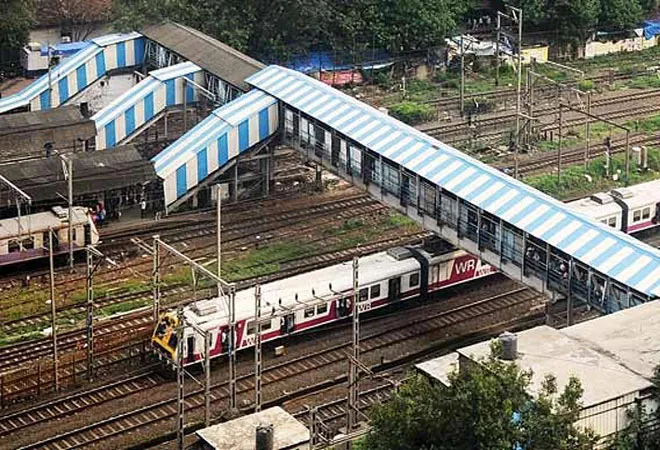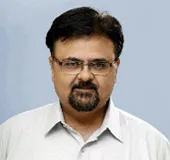
The recent letter written by Niti Aayog CEO Amitabh Kant to the Indian Railways (IR) doubting the veracity of the latter’s claim of “zero deaths” in Financial Year (FY) 2019-20 has once again put the spotlight on the safety and wellbeing of the millions of train travellers in India. Addressed to the Chairman Railway Board (CRB), the letter specifically referred to the large number of deaths – especially on the suburban railway services in Mumbai – and stressed that such fatalities should not be excluded from the purview of the railways. “If ignored, we will never be able to institute a corrective mechanism,” he pointed out.
The Railway Board responded by reiterating its claim of “zero deaths”, but admitted that up to 30,000 people had indeed died, in what was claimed as “untoward incidents”, in the past three years. It explained that only those deaths that happened because of railway accidents such as derailments and collisions, are accounted for. People who die because of reasons beyond the control of the railways like falling from overcrowded trains and getting run over while trespassing on tracks, were inconsequential fatalities, for which the Indian Railways cannot be held accountable. These deaths “happened primarily “due to negligence or carelessness on the part of the passengers/public”, CRB VK Yadav claimed.
Such a contrarian stance on the deaths, which happen but go unrecorded on flimsy technical grounds, call for a deeper and objective analysis of the long-unresolved problem.
IR’s remarkable achievement
No objective analysis of this issue is possible without acknowledging IR’s remarkably improved safety record in terms of its core operations. The welcome claim of “zero deaths” on account of consequential accident-related incidents made by the IR underlines its relentless pursuit for enhanced safety measures, especially in the past five years. According to the data compiled by the Ministry of Statistics and Programme Implementation (MoSPI), 3,486 people died in railway accidents during 2003-2015. The year 2015 recorded the maximum of 710 deaths. The next five-year period, however, saw a dramatic turnaround. FY 2015-16 recorded a sharp fall with 148 deaths, which rose marginally to 192 in 2016-17 but dropped to 97 in 2017-18, 18 in 2018-19 and to zero in 2019-20.
What brought about this transformation? In the past five years, the railways have procured better railway tracks, conducted large-scale replacement of the old coaches with Linke Hofmann Busch (LHB) coaches giving more stability, greater speed and space, up-scaled 360-degree maintenance, staff training and increased the frequency and regularity of safety audits. IR’s biggest achievement has been the elimination of the thousands of unmanned level-crossings across the country, which used to witness the maximum number of deaths.
Thousands die owing “untoward” incidents
Though IR’s “zero consequential deaths” is an exceptional achievement, one cannot ignore the fact that thousands continue to die. The death count of 30,000 revealed by the Railway Board in its response to the Niti Aayog CEO’s letter reflects the deaths across the entire Indian Railway network that covers nearly 68,500 kilometres. More than 27 percent of them happen only on the Mumbai Suburban Railway System (MSRS), which, spread over 300 route kilometres, constitutes only 0.5 percent of IR’s total track length. Operated by the Western Railway (WR) and Central Railway (CR) zones of the Indian Railways, the MSRS is the city’s lifeline, daily catering to nearly eight million commuters across the linear geography of the Mumbai Metropolitan Region.
However, despite being the most convenient and reliable mode of daily commutes for millions in the mega city, the MSRS carries the stigma of also recording an unacceptably high number of deaths. All 2,691 deaths that occurred on the MSRS in 2019 were termed as deaths owing to untoward incidents. Of those who died, 52 percent (1,400) deaths were of trespassers who were run over. The second biggest reason for casualties was people falling off overcrowded trains, which took 600 lives.
 Source: GRP, CR and WR data and news reports from NDTV, Mumbai Mirror, Times of India, Indian Express, DNA and Hindustan Times.
Source: GRP, CR and WR data and news reports from NDTV, Mumbai Mirror, Times of India, Indian Express, DNA and Hindustan Times.
A number of proactive efforts made by both CR and WR over the past 10-odd years have ensured that the fatality rate owing to untoward incidents on the MSRS has come down from up to 11-plus deaths in 2014 to around eight per day in 2010. However, while there is no direct culpability, the railways also cannot be absolved of its responsibility for preventing these deaths. While eight people die on the MSRS daily, the rest of IR’s national network witnesses up to 22 deaths on a daily basis with trespassing and falling from overcrowded trains being the highest cause for both. While trespassing could be ascribed to factors beyond the control of the railways, causes like falling from overcrowded trains, falling into the gap between the platforms, and hitting the signal poles while hanging on the footboards of trains, happen primarily due to severe overcrowding. In the case of the MSRS, the commuters have little option but to travel dangerously as trains remain hopelessly overcrowded, especially during the rush hours. One needs to understand that the IR enjoys a monopolistic advantage as the nation’s biggest transport provider and it is its duty to ensure that no passenger is put in life-threatening situations. Such deaths can only be reduced by urgently introducing mega capacity enhancing projects and their time-bound completion. Given their direct impact on saving precious lives, the Ministry of Railways must urgently plan and prioritise funding for all such projects.
It is a common experience, especially on smaller en-route stations across India, that an oncoming train is shifted to a different platform than the pre-announced one at the very last minute. Such last-minute changes create panic among the passengers waiting to board. They prefer to jump, hauling their heavy luggage on the tracks to move to the other platform, rather than doing the long and tedious journey using the foot-over-bridges (FoBs). Often, such avoidable lapses have also resulted in fatal stampedes on FoBs. On the MSRS, when life during the rush hour depends on the suburban trains by the minute, such enforced trespassing is a common phenomenon. Deaths that happen on account of such avoidable reasons could be eliminated by reconstructing existing timetables innovatively to ensure that each oncoming train get a dedicated dock platform at all en-route stations.
At the same time, the state governments, local administrations and parastatals concerned must be held collectively accountable for deaths due to trespassing. The state/local governments must cooperate with the Railways (and vice versa) and eliminate trespassing at all station areas which have seen heavy growth of human settlements on either side of the railway lines over the past 15-odd years. This is possible by constructing an adequate number of FOBs and subways equipped with escalators. In Mumbai, most trespassing on the tracks between stations happen only because of the lack of FoBs and pedestrian underpasses that allow safe passage. Such deaths are bound to decline if proper provision of such essential amenities is made on a war footing. Trespassers who continue to commit the offence even after the provision of such amenities must be dealt with severely as mandated by law.
The report submitted by the High-Level Safety Review Committee constituted under the chairmanship of Dr Anil Kakodkar in February 2012 had termed the casualties on the MSRS as a “massacre which no civilised society can accept”. It had clearly mentioned that “reluctance of Indian Railways to own these casualties, which do not fall under the purview of train accidents but are nevertheless accidents on account of trains can by no means be ignored”. Eight years later, the Niti Aayog CEO in his letter to the Railway Board has raised the same issue afresh. But the shameful truth is that thousands continue to die and no one is held accountable, even as the IR can claim zero deaths.
The views expressed above belong to the author(s). ORF research and analyses now available on Telegram! Click here to access our curated content — blogs, longforms and interviews.





 PREV
PREV


